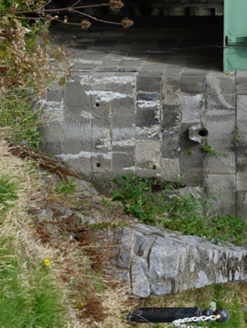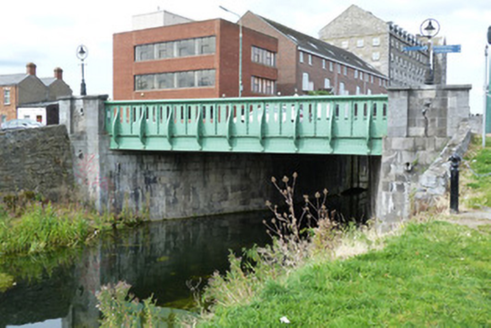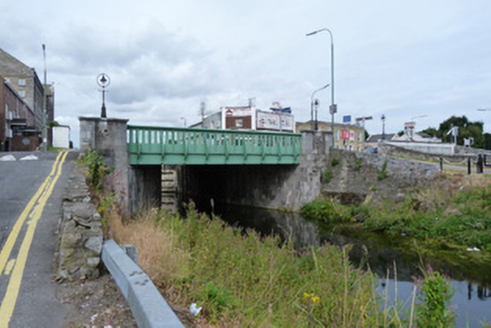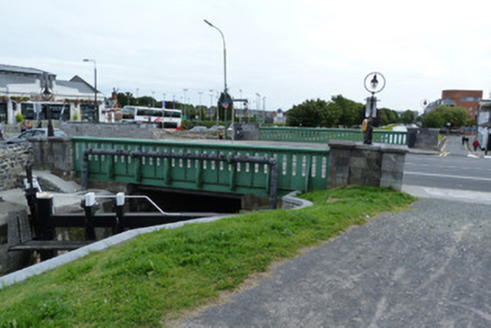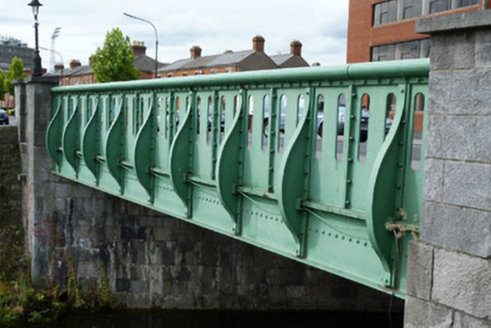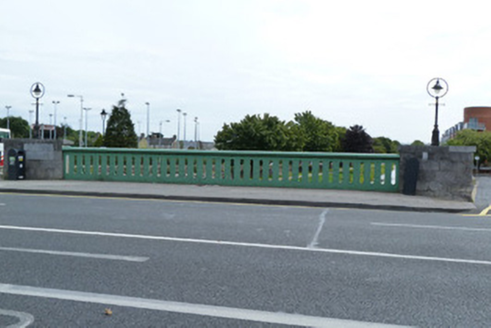Survey Data
Reg No
50060185
Rating
Regional
Categories of Special Interest
Architectural, Social, Technical
Previous Name
Westmoreland Bridge
Original Use
Bridge
In Use As
Bridge
Date
1860 - 1865
Coordinates
315097, 236272
Date Recorded
24/08/2014
Date Updated
--/--/--
Description
Single-span canal bridge, likely rebuild of c.1864 at same time as construction of railway bridge to north, carrying Phibsborough Road over Royal Canal. Older canal bridge apparently removed. Ashlar limestone abutments and terminating piers, latter with dressed limestone caps supporting cast-iron lamp standards with acanthus-leaf ornament to bases. Drainage spouts to outer faces of piers. Rubble limestone wing walls. Cast-iron parapets with rounded tops, round-ended vertical perforations and curving buttress-like elements to outer sides. West side of bridge has pipe attached. Canal lock to same side.
Appraisal
This canal bridge and adjacent lock were named for the Earl of Westmoreland, who laid the first stone at this site in 1790. The present bridge structure appears to be a rebuild, probably of about 1864, when the adjacent railway line and bridge were constructed, in order to provide a level road surface across railway and canal. The quality of the ashlar stonework is high and the cast-iron parapets, by Ross & Walpole Ltd Engineers Dublin, and the light standards, add decorative interest. The setting of the lock is enhanced by the presence of a significant group of industrial structures nearby, including Westmoreland (now 5th) lock, the adjacent canal and railway bridge, the former North City Flour mills and a former railway siding. The Royal Canal Company was established in 1789 to construct a canal to provide freight and passenger transport between Dublin and the River Shannon.
